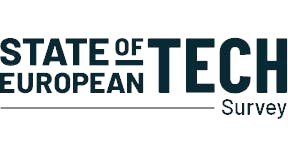The NASDAQ-100 tech index, a basket of the world’s biggest tech companies listed on the US stock exchange, started decelerating in the end of 2023, but has had a strong recovery since. In the first quarter of 2024, the median multiple across the list of NASDAQ-100 tech companies has bounced back to highs last seen in 2021, reflecting strengthened investor confidence in tech growth prospects. While markets have cooled off again since, the tech multiple still remains well above its ten year average.
On the other side of the pond, European public $B+ companies listed locally in Europe are still hovering around the 10-year average, and the rally experienced by the NASDAQ-100 tech index is not visible.
While it might be tempting to get drawn into the headline numbers, with headlines at times anchoring on the significant delta in multiples between the two benchmarks, it is important to understand the differences between the underlying companies driving these figures.
The NASDAQ-100 tech index includes the world’s biggest tech companies like Apple, Microsoft and Nvidia. Their combined total enterprise value for the top five sums to $13T, significantly ahead of the European listed equivalent, where the top five sum to $0.8T. The difference in scale is significant, with all NASDAQ-100 tech constituents’ TEV at $10B+ while only 23 of the 74 mapped European $B+ companies surpassing this milestone. This tail end of mid to small cap listings in Europe is driving the lower multiple in Europe, while the top 10 European listings trade close to the US median.
This comparison ultimately highlights underlying structural challenges. For example, if ARM had chosen to list in Europe, it would have stood as the region’s highest-multiple billion-dollar company, with a multiple approaching 30x at the time of analysis.












































